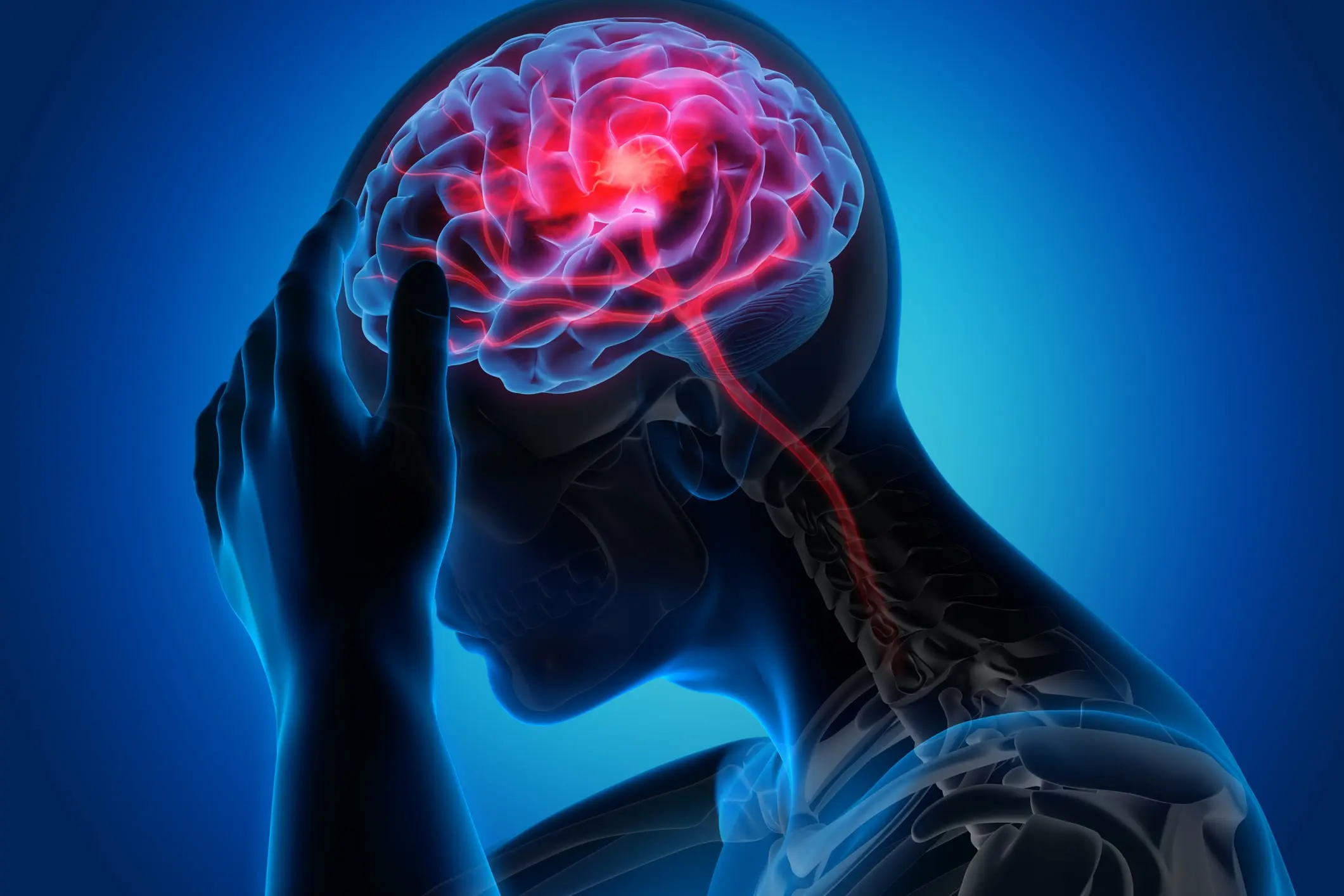In the vast and often perplexing world of mental health, two conditions often intertwine, each amplifying the other’s intensity like a volatile crescendo: Borderline Personality Disorder (BPD) and Addiction.
This deadly tango, etched deep within the psyche, creates a complex labyrinth that affects millions globally.
As we peel back the layers of these closely connected conditions, we journey into an intricate exploration that traverses not just the tumultuous terrain they carve, but also the promising pathways towards healing and recovery.
Understanding Borderline Personality Disorder
WHAT IS BPD?
Borderline Personality Disorder (BPD) is a complex mental health disorder often characterized by ongoing instability in moods, behavior, self-image, and functioning.
These experiences often result in impulsive actions and turbulent relationships with other people.
Individuals with BPD may experience intense episodes of anger, depression, and anxiety that can last from a few hours to days.
Persistent feelings of emptiness, inappropriate, intense anger, and suicidal behavior or threats of self-injury are also common.
Often, the unpredictability of moods and behaviors causes significant distress in the individual’s life, leading to a host of difficulties in relationships, jobs, and academic settings.
With its roots potentially lying in genetics, brain structure and function, as well as environmental factors, BPD presents a complex interplay of factors demanding a comprehensive approach to treatment and management.
COMMON SYMPTOMS AND CHARACTERISTICS OF BPD IN DETAIL
Individuals with Borderline Personality Disorder (BPD) often exhibit a range of intense and fluctuating symptoms.
A key characteristic is emotional instability where emotions can be extreme and change rapidly, sometimes in response to seemingly minor events.
These can include intense bouts of anger, panic, or despair.
Relationship instability is another hallmark, with relationships often described as an emotional rollercoaster, filled with idealization and devaluation.
Impulsive and risky behaviors are also common, such as reckless driving, unsafe sex, or substance abuse1.
They might have chronic feelings of emptiness and fear of abandonment, which may lead to frantic efforts to avoid being left alone.
Many people with BPD also struggle with self-image, having a distorted and unstable self-image or sense of self.
Furthermore, in stressful situations, they might experience paranoid thoughts or have episodes of feeling detached from reality, manifesting as dissociation.
The manifestation of these symptoms and their severity can vary greatly from person to person, making BPD a complex and multifaceted disorder.
| Symptoms of BPD | Description |
|---|---|
| Emotional instability | Individuals with BPD often experience intense mood swings, shifting rapidly between euphoria, depression, anxiety, or anger. |
| Fear of abandonment | This involves intense fear of being abandoned or left alone, leading to frantic efforts to avoid real or imagined abandonment. |
| Unstable relationships | Characterized by extreme fluctuation between idealizing someone one moment and dramatically devaluing them the next. |
| Impulsive behavior | Impulsivity can lead to self-damaging behaviors such as substance abuse, unsafe sex, reckless driving, or binge eating. |
| Chronic feelings of emptiness | People with BPD often describe ongoing feelings of emptiness or boredom. |
| Distorted self-image | This includes issues with self-identity or self-image, characterized by changing goals, values, and seeing oneself as bad or as if they don’t exist at all. |
| Intense or uncontrollable anger | It involves frequent displays of temper, being constantly angry, and physical fights. |
| Paranoid thoughts or dissociative symptoms | Under stress, individuals may experience paranoia or dissociation, feeling cut off from themselves or reality. |
CAUSES OF BPD
The causes of Borderline Personality Disorder (BPD) are not fully understood but are believed to be a combination of genetic, neurological, and environmental factors.
Research suggests a strong genetic link, as BPD is more common among individuals with a close family member, such as a parent or sibling, with the disorder2.
Neurologically, individuals with BPD may have differences in brain structure and function, particularly in areas regulating emotions and impulse control.
Moreover, environmental factors, especially during childhood, play a substantial role in BPD development.
These factors can include traumatic life events such as abuse, neglect, or a sudden separation from caregivers during childhood, which may trigger the disorder in individuals who are already genetically prone to it.
However, it’s important to note that not everyone exposed to these factors develops BPD, highlighting the complexity and multifaceted nature of its causes.
| Causes of BPD | Descriptions |
|---|---|
| Genetic Factors | Research suggests a strong genetic predisposition to BPD. Individuals with a close family member who has the disorder are at a higher risk of developing it. |
| Neurological Factors | Structural and functional differences in the brain, especially in areas that regulate emotions and impulse control, are observed in individuals with BPD. |
| Environmental Factors | Childhood trauma, including physical or emotional abuse, neglect, or separation from caregivers, can increase the risk of developing BPD, especially in those with a genetic predisposition. |
Living With Borderline Personality Disorder
THE IMPACT BPD HAS ON AN INDIVIDUAL’S LIFE
Living with Borderline Personality Disorder (BPD) can lead to a range of serious consequences affecting multiple aspects of a person’s life.
The emotional instability inherent to BPD often results in a significant disturbance in relationships, leading to a pattern of intense but unstable interpersonal connections.
Such turbulent relationships can cause problems in family dynamics, friendships, and romantic partnerships.
Additionally, the impulsive behavior that characterizes BPD may result in risky actions, including reckless driving, unsafe sex, drug abuse, or binge eating, leading to potential legal, health, and financial problems.
Individuals with BPD may also struggle academically or vocationally due to difficulties in maintaining consistent behavior and emotional stability.
The constant emotional turmoil and chronic feelings of emptiness can severely impact an individual’s quality of life and can often lead to self-harming behaviors or suicidal tendencies.
It’s essential to note that BPD, like other mental health disorders, significantly influences mental well-being and overall life satisfaction.
The Link Between BPD and Addiction
STUDIES AND STATISTICS
Studies have demonstrated a high co-occurrence rate between Borderline Personality Disorder (BPD) and addiction, suggesting a significant overlap between these conditions3.
According to the National Institute on Drug Abuse, around 50% to 70% of individuals with BPD will experience a substance use disorder at some point. These rates are notably higher than those seen in the general population.
Alcohol and drug use disorders are common among people with BPD.
Furthermore, according to a study published in the Journal of Clinical Psychiatry, around 78% of adults with BPD had one or more lifetime substance use disorders.
The high prevalence of addiction in individuals with BPD underscores the complex relationship between emotional dysregulation and compulsive behaviors and the importance of addressing both conditions in a comprehensive treatment approach.
Common Risk Factors for BPD and Addiction
CONTRIBUTING FACTORS
Several common factors contribute to both Borderline Personality Disorder (BPD) and addiction, demonstrating the intertwined nature of these conditions.
Firstly, genetic predisposition plays a role in both disorders.
Research shows that individuals with a family history of BPD or addiction are at a higher risk of developing these conditions.
Secondly, environmental factors, especially those experienced during childhood, such as trauma, neglect, or abuse, can increase the likelihood of developing both disorders.
Thirdly, both BPD and addiction often involve difficulties in emotional regulation.
Individuals may struggle to manage intense emotions and turn to substances as a form of self-medication, thereby setting the stage for addiction.
Furthermore, the impulsivity that is characteristic of BPD can also contribute to substance misuse and the development of addictive behaviors.
Lastly, both conditions are associated with a heightened response to stress and difficulties in interpersonal relationships, which can further reinforce the cycle of emotional instability and substance use.
SELF MEDICATING AS A COPING MECHANISM
For individuals with Borderline Personality Disorder (BPD), addiction often arises as a maladaptive coping mechanism to manage their intense and fluctuating emotions.
The emotional instability inherent in BPD can be distressing, leading to feelings of emptiness, fear of abandonment, and difficulties in relationships.
In an attempt to soothe these feelings and to achieve a semblance of emotional control, individuals with BPD may turn to substances.
Alcohol, drugs, or other addictive behaviors may provide temporary relief from their emotional turmoil and inner chaos.
However, this reprieve is short-lived and typically leads to a worsening of symptoms over time.
These substances can often exacerbate impulsivity, another key characteristic of BPD, thereby creating a vicious cycle of escalating substance use and increasing emotional instability.
Thus, while addiction may begin as a way to cope with the emotional pain associated with BPD, it ultimately perpetuates and intensifies the disorders damaging impact.
Treatment Approaches for Co-Occurring BPD and Addiction
PSYCHOTHERAPY APPROACHES FOR DUAL DIAGNOSIS
Psychotherapy, also known as talk therapy, plays a critical role in treating individuals with a dual diagnosis of Borderline Personality Disorder (BPD) and addiction.
Several therapeutic modalities have shown effectiveness in this regard.
Dialectical Behavior Therapy (DBT), initially developed to treat BPD, is often a key component of dual diagnosis treatment.
DBT combines cognitive-behavioral techniques with mindfulness concepts to help individuals better manage their emotions, tolerate distress, and improve interpersonal relationships.
Cognitive-Behavioral Therapy (CBT) is another essential approach, helping individuals recognize and challenge negative thought patterns and behaviors that contribute to addiction and BPD symptoms.
For those with a history of trauma, Trauma-Focused CBT or Eye Movement Desensitization and Reprocessing (EMDR) may be beneficial4.
These therapies aim to help individuals process traumatic experiences that often underlie BPD and addiction.
Additionally, taking a holistic approach with programs such as Yoga, Meditation, Nutrition Therapy, and Weight Training, has been effective for individuals changing their destructive life patterns or habits, and building new healthy ones.
Furthermore, residential treatment programs can provide a stable, supportive environment to help individuals with BPD and addiction start their recovery journey.
Addressing co-occurring disorders is key, as individuals with BPD often have other mental health disorders like depression or anxiety, which can complicate addiction treatment.
Therefore, a comprehensive, integrated approach that addresses the root causes and provides tools for managing both disorders can lead to more positive long-term outcomes.
It’s important to note that an individualized treatment plan tailored to each person’s unique needs is most effective in managing a dual diagnosis.
Challenges and Considerations in Treatment
Treating individuals with a dual diagnosis of Borderline Personality Disorder (BPD) and addiction presents several challenges and considerations.
The complex nature of these co-occurring disorders requires a multifaceted and highly individualized treatment approach.
A primary challenge is the emotional instability characteristic of BPD, which can make it difficult for individuals to engage consistently in treatment.
Similarly, impulsivity, another key feature of BPD, can result in risky behaviors, including relapses into substance use.
Another challenge is the high prevalence of past trauma among those with BPD and addiction, necessitating trauma-informed care.
In terms of considerations, it is important to remember that progress may be slow and involve setbacks.
Patience, persistence, and a non-judgmental approach are vital.
Ensuring continuity of care, with transition planning and aftercare support, can also greatly enhance treatment outcomes.
Lastly, involving the individual in the planning and ongoing evaluation of their treatment plan can enhance their sense of control and commitment to recovery.
A Message of Hope
Though complex, the intimate dance of these two conditions is not an insurmountable challenge.
With comprehensive and integrated treatment models, individuals suffering from BPD and addiction can navigate their way toward recovery.
It’s a journey marked not only by confronting shadows of the past, but also by harnessing the power of self-awareness and resilience to break the cycle of emotional turmoil and substance misuse.
As we step into the light of understanding these co-occurring disorders, we uncover not just the complexities, but also the immense strength of the human spirit.
In the world of mental health and addiction, remember, recovery is not a straight line – it’s some what of a labyrinth.
And even within the winding path, at each turn, there lies the possibility for discovery, transformation, and hope.
Remember, every maze has an exit and every journey a destination – and for those navigating the labyrinth of BPD and addiction, hope and healing are indeed on the horizon.
At Cornerstone Healing Center in Scottsdale Arizona, our mission is to help those struggling with a dual diagnosis.
We are a trauma based facility, ready to help you and/or your loved one take the first step towards lasting recovery!
Please reach out to one of our admission specialists for a free and confidential assessment.
SOURCES
[1] Borderline Personality Disorder
[2] Family Study of Borderline Personality Disorder and Its Sectors of Psychopathology
[3] Borderline personality disorder and substance use disorders: an updated review
[4] Treatment of a Patient with Borderline Personality Disorder Based on Phase-Oriented Model of Eye Movement Desensitization and Reprocessing (EMDR): A Case Report
Published: 6/28/2023
Main Contributor: Julie Miller
Co-Contributor: Susana Spiegel








